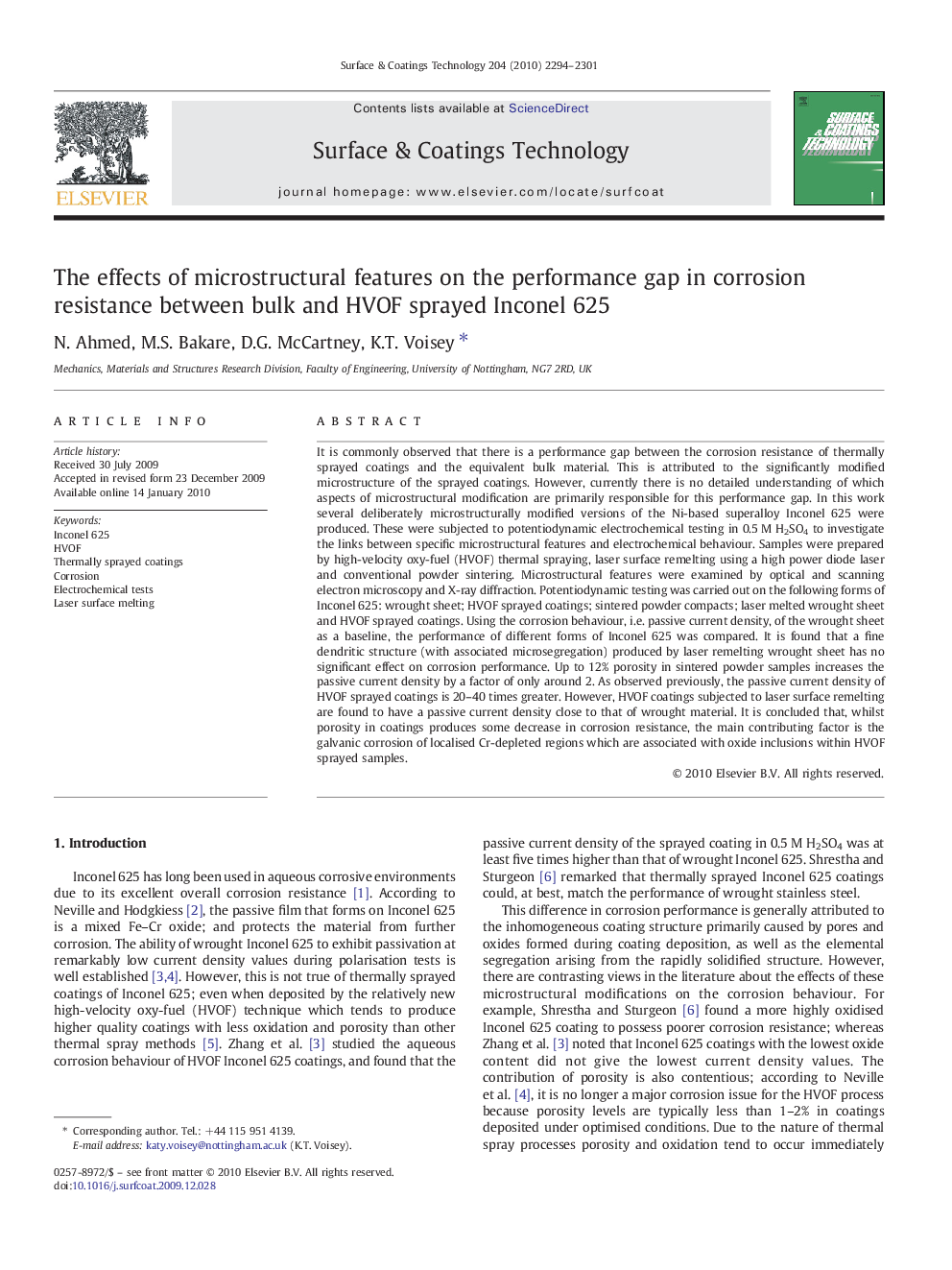| Article ID | Journal | Published Year | Pages | File Type |
|---|---|---|---|---|
| 1659873 | Surface and Coatings Technology | 2010 | 8 Pages |
It is commonly observed that there is a performance gap between the corrosion resistance of thermally sprayed coatings and the equivalent bulk material. This is attributed to the significantly modified microstructure of the sprayed coatings. However, currently there is no detailed understanding of which aspects of microstructural modification are primarily responsible for this performance gap. In this work several deliberately microstructurally modified versions of the Ni-based superalloy Inconel 625 were produced. These were subjected to potentiodynamic electrochemical testing in 0.5 M H2SO4 to investigate the links between specific microstructural features and electrochemical behaviour. Samples were prepared by high-velocity oxy-fuel (HVOF) thermal spraying, laser surface remelting using a high power diode laser and conventional powder sintering. Microstructural features were examined by optical and scanning electron microscopy and X-ray diffraction. Potentiodynamic testing was carried out on the following forms of Inconel 625: wrought sheet; HVOF sprayed coatings; sintered powder compacts; laser melted wrought sheet and HVOF sprayed coatings. Using the corrosion behaviour, i.e. passive current density, of the wrought sheet as a baseline, the performance of different forms of Inconel 625 was compared. It is found that a fine dendritic structure (with associated microsegregation) produced by laser remelting wrought sheet has no significant effect on corrosion performance. Up to 12% porosity in sintered powder samples increases the passive current density by a factor of only around 2. As observed previously, the passive current density of HVOF sprayed coatings is 20–40 times greater. However, HVOF coatings subjected to laser surface remelting are found to have a passive current density close to that of wrought material. It is concluded that, whilst porosity in coatings produces some decrease in corrosion resistance, the main contributing factor is the galvanic corrosion of localised Cr-depleted regions which are associated with oxide inclusions within HVOF sprayed samples.
